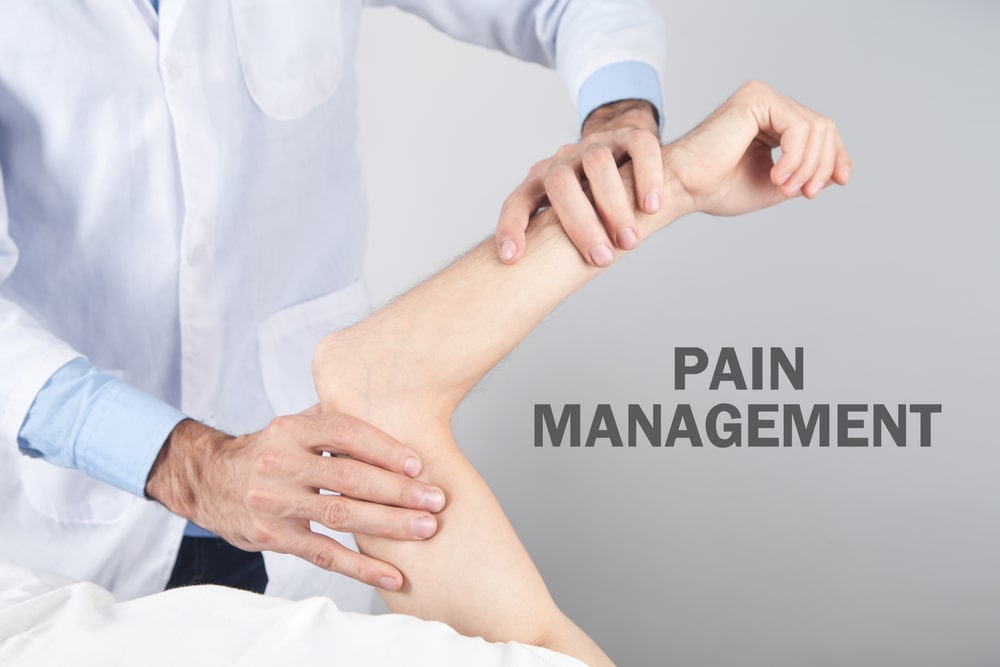The Relevance of a Pain Management Medical Professional in Conquering Daily Discomfort
If you're handling persistent discomfort, you know just how much it can interrupt your everyday life. A pain monitoring physician can be important in helping you find alleviation and reclaim control. They understand that discomfort isn't just a physical issue; it influences every facet of your life. With their know-how, they can tailor a therapy plan simply for you. What precisely does this process look like, and exactly how can it transform your experience?
Comprehending Persistent Pain and Its Influence on Life
Understanding persistent discomfort is necessary because it can substantially impact your every day life. When you experience relentless pain, it does not simply stick around in the background; it can dominate your thoughts, feelings, and tasks. You may find it tough to complete everyday tasks, enjoy pastimes, and even preserve relationships. It can bring about irritation, anxiety, and sensations of isolation.The unpredictability of persistent pain can make intending difficult, as you never know when a flare-up could occur. This unpredictability can interrupt your work and social life, leaving you really feeling bewildered. Your sleep high quality could suffer as well, as discomfort maintains you awake at night.Recognizing these impacts is the very first step toward discovering effective methods to cope. By comprehending how persistent discomfort affects your life, you can begin to look for the right assistance and therapies to regain control, enhance your total well-being, and improve your top quality of life.
The Duty of a Discomfort Administration Doctor
When you're fighting with persistent pain, a pain administration physician can be your ally in maneuvering the complexities of your problem. These specialists concentrate on comprehending your one-of-a-kind discomfort experience and developing a tailored therapy strategy. They incorporate various methods, consisting of drug management, physical therapy, and interventional techniques, to assist you reclaim control over your life.Your discomfort monitoring physician additionally provides education regarding your problem, empowering you to make enlightened decisions concerning your treatment. They'll work very closely with various other healthcare experts, making sure a detailed strategy that deals with both physical and emotional elements of discomfort. By checking your progression, they change treatments as needed, helping you find the most effective relief.Ultimately, a pain monitoring physician plays a vital role in your journey towards improved well-being, assisting you with challenges and celebrating your successes along the means. With their support, living a more comfortable life ends up being possible.
Comprehensive Analysis and Diagnosis
How can a thorough assessment change your discomfort monitoring journey? It begins with comprehending your special pain experience. When you check out a pain monitoring medical professional, they'll carry out a comprehensive examination, examining your medical history, lifestyle, and any previous therapies you've attempted. This action is vital due to the fact that it assists identify the source of your discomfort.During the analysis, you'll likely undergo health examinations and may even obtain diagnostic tests like X-rays or MRIs. These understandings allow your medical professional to identify particular concerns and comprehend just how they affect your day-to-day live. By collecting this info, they can better review the seriousness and kind of pain you're dealing with.Ultimately, this comprehensive approach sets the stage for efficient approaches tailored to your demands - Pain Management Doctors. The even more your medical professional understands about your pain, the far better furnished they are to aid you discover alleviation and improve your lifestyle
Tailored Therapy Plans: Methods for Relief
While everyone's pain experience is one-of-a-kind, a tailored therapy strategy can make all the distinction in attaining alleviation. Your discomfort management physician will analyze your specific problem, lifestyle, and preferences to develop a technique that benefits you. This tailored approach may consist of drugs, physical therapy, or way of living adjustments, all focused on resolving your individual needs.Communication is essential; do not hesitate to share your thoughts and issues with your medical professional. They'll readjust your plan as needed, ensuring you remain on track. You might additionally explore various techniques, like targeted shots or nerve blocks, depending upon your scenario.
Integrative Approaches: Integrating Treatments for Better Outcomes
When handling pain, combining different treatments can result in better outcomes. You could discover that a multidisciplinary technique, that includes both medical and holistic recovery approaches, addresses your requirements better. Allow's discover how integrating these strategies can boost your total health.
Multidisciplinary Therapy Approaches
Integrating different treatment methods can significantly boost your discomfort administration end results. By dealing with a discomfort monitoring medical professional, you can access a multidisciplinary technique that integrates medicines, physical treatment, and psychological assistance tailored to your requirements. This collaborative effort guarantees you obtain complete treatment, dealing with both the physical and emotional facets of pain.For circumstances, incorporating targeted workouts with cognitive-behavioral therapy can help you develop strength versus persistent pain. Furthermore, including nutritional support might enhance your general health and health. Your medical professional will certainly coordinate these treatments, making certain they collaborate sympathetically. By embracing a multidisciplinary approach, you not only tackle discomfort a lot more efficiently but likewise cultivate a better high quality of life.
All Natural Recovery Methods

The Psychological Element of Discomfort Monitoring
Discomfort is usually viewed as a simply physical experience, its mental aspects play a vital function in reliable management. You might not understand exactly how your state of mind, emotions, and stress and anxiety levels can affect your assumption of discomfort. When you experience pain, your ideas can magnify or diminish your pain. If you're distressed or clinically depressed, pain might feel a lot more intense; conversely, a positive overview can assist alleviate it.Understanding this connection is considerable. By identifying exactly how your psychological state impacts your view discomfort, you can collaborate with your pain monitoring physician to establish approaches that deal with both facets. Techniques like cognitive-behavioral treatment, mindfulness, and leisure exercises can encourage you to manage discomfort better. In addition, engaging in helpful discussions with your doctor can aid you reveal your psychological struggles, permitting a much more comprehensive approach to your therapy. Acknowledging the mental side of discomfort can lead to a more alternative and reliable monitoring plan.

Empowering Patients: Tools for Self-Management and Support
In your trip to take care of discomfort, embracing self-management techniques can make a considerable difference. Making use of these devices not only cultivates freedom yet also connects you with community assistance networks that comprehend your struggles. With each other, you can produce a stronger foundation for your discomfort monitoring.
Self-Management Techniques

Neighborhood Assistance Networks
As you check out self-management techniques, don't take too lightly the power of area support networks. Linking with others that comprehend your pain can provide very useful psychological and practical assistance. These networks commonly include support system, online discussion forums, or regional meet-ups where you can share experiences and coping strategies.Engaging with peers permits you to discover from their journeys and get new understandings into handling your discomfort. You'll discover motivation in common stories, which can encourage you to stay devoted to your pain monitoring plan.Additionally, these networks can link you to resources such as workshops, educational materials, and health care specialists. Accepting neighborhood support boosts your self-management journey, equipping you to take control of your pain see this website and enhance your total well-being.
Often Asked Questions
Just how Do I Select the Right Pain Administration Medical Professional?
To select the appropriate discomfort management physician, study their credentials, reviewed reviews, and consider their therapy strategy. Schedule an appointment to discuss your issues and determine their communication style. Trust fund your instincts in choosing.
What Should I Anticipate During My Very First Consultation?
Throughout your first visit, you'll review your discomfort history, go through a physical exam, and possibly receive diagnostic examinations. Your medical professional'll create an individualized therapy strategy, addressing your worries and establishing objectives for handling your discomfort properly.
Are Discomfort Administration Treatments Covered by Insurance Coverage?
Yes, several pain management treatments are covered by insurance coverage, yet it differs. You should examine your certain strategy information and talk with your provider to understand what's included and any potential out-of-pocket costs.
Can I Continue Regular Activities While Going Through Pain Administration?
Yes, you can typically continue regular activities while undergoing pain administration. Spine Doctor. Nevertheless, it's vital to pay attention to your body and change your activities based on your comfort level and the advice of your doctor
What Are the Possible Adverse Effects of Pain Drugs?
You may experience negative effects like dizziness, nausea, constipation, or sleepiness from pain medicines. It's critical to keep an eye on exactly how you feel and connect any issues with your doctor to adjust your treatment plan if needed.
Comments on “How to Tell If a Spine Doctor Is Right for You: Green Lights”